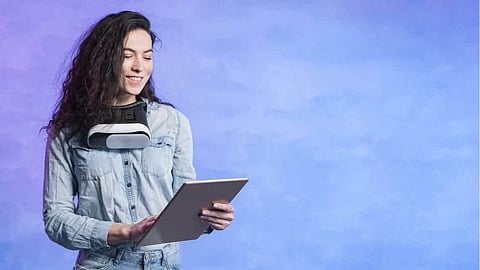

Digital transformation is not restricted to industries anymore. It is real, and it is impacting sectors like healthcare, education, fashion, and others. While we are aware of how modern technologies are impacting every niche, there is not much literature available about education. At present, education institutions worldwide are faced with multifaceted challenges, including the growing impact of digitalization and changing expectations from students, staff, and faculty. Thanks to the brutality of the coronavirus pandemic, digital transformation in education have shifted from important to essential within a few months. It has highlighted the gap that is prevalent in this community between the necessities and 'not' in this period. Further, as this sector becomes competitive, digital transformation is now becoming a must for survival as this new digital world requires educators to adapt and adopt digital technologies, methodologies, and mindsets.
Due to COVID-19, nearly 1.5 billion students that include 90% of all primary, tertiary, and secondary level learners in the world, are unable to go to school physically. Recently the US Department of Education (DOE) has taken measures to mitigate the hindering factors by creating a National Education Technology Plan. This comprehensive roadmap is designed to provide high-quality learning experiences to students across the country using technology. And the best part is digital transformation in the education industry is not restricted to online teaching and learning post-COVID19. Instead, the plan focuses on teaching and learning through technology, develop leadership to create a transformative culture, assessment of transformative tools and processes, and build an infrastructure that enables access and use of technology.
Meanwhile, there are certain trends that are likely to take center stage in the field of education in the coming years. These are:
The US Department of Education in the National Education Tech Plan defines it as the "instruction that is paced to learning needs (i.e., individualized), tailored to learning preferences (i.e., differentiated), and tailored to the specific interests of different learners. Here, students can set the pace of their learning and control learning aesthetics as it involves less direct instruction from the teacher and more discovery-based methods of learning. In this system, educational institutes can personalize content and educational experiences in innovative ways. Plus, it is used to deliver custom solutions to meet the learning needs of particular individuals. E.g., Dragon Speak helps dyslexic students "write" their papers by voice, ensuring that their answers are not limited by their ability to spell or write. In addition, they're able to learn via audiobooks, rather than moving slowly through text ones.
If the COVID-19 has taught us something, it is about the importance of maintaining a sanitary and contactless lifestyle. This is why one can expect thermal screenings and contactless attendance system to dominate the educational institutes. Thermal imaging equipment can detect if a student's or teacher's body temperature is normal or above the normal range. In case the body temperature is found to be high; authorities can suggest them to visit a doctor for the treatment and trace the people they have been in contact with and warn others. Replacing biometric attendance systems with contactless attendance can help prevent the spread of pathogens. Institutes can also use IP or CCTV cameras to capture a person's face and mark their attendance by identifying them with facial recognition.
This involves the intercourse of gaming technology and learning. There is indeed no better way for students to learn than through gamification because it is not only fun but also interactive while also effectively attaining the set goals. This technology aims to make learning a difficult subject matter more exciting, and interactive. These games mirror certain life aspects, which then require students to make use of their skills to solve them. Further, via gamification, students may be presented by additional levels, or progress bars to the content, or points for correct answers and placing them on leaderboards. E.g., Drexel University collaborated with Tata Interactive Systems to create a simulation-based game for students studying for a certificate in forensics. The program is designed to teach students about conducting assessments at a violent crime scene, providing them with a 3D virtual crime scene complete with evidence and clues. It also simulates victim and offender interviews, gives continuous feedback, new situations to apply the skills in, and the chance to replay their performance to do better on their next go.
Yes, the immersive world of AR and VR can also transform the educational backdrop. For instance, using AR, students can "dissect" a frog without the mess, sanitation concerns, or squeamishness. Apps such as Unimersiv can transport students to ancient Greece, while Cospaces allows students to share their virtual creations with the world. Even devising Google Expeditions AR can make classrooms more attainable with a wide range of experiences available via simple phone apps. Currently, Expeditions already offers some 900 different expeditions, including visits to the Louvre and Mt. Everest.
Though Virtual Reality still has some bottlenecks in terms of costs and content, AR is a more accessible technology as requires mobile phone only. But in the end, both AR and VR helps students to learn more effectively than traditional classroom methods by overcoming language barriers and accommodating visual learners. These technologies help to break the limitations of geographical education and foster remote learning with just a click away.
Join our WhatsApp Channel to get the latest news, exclusives and videos on WhatsApp
_____________
Disclaimer: Analytics Insight does not provide financial advice or guidance. Also note that the cryptocurrencies mentioned/listed on the website could potentially be scams, i.e. designed to induce you to invest financial resources that may be lost forever and not be recoverable once investments are made. You are responsible for conducting your own research (DYOR) before making any investments. Read more here.
